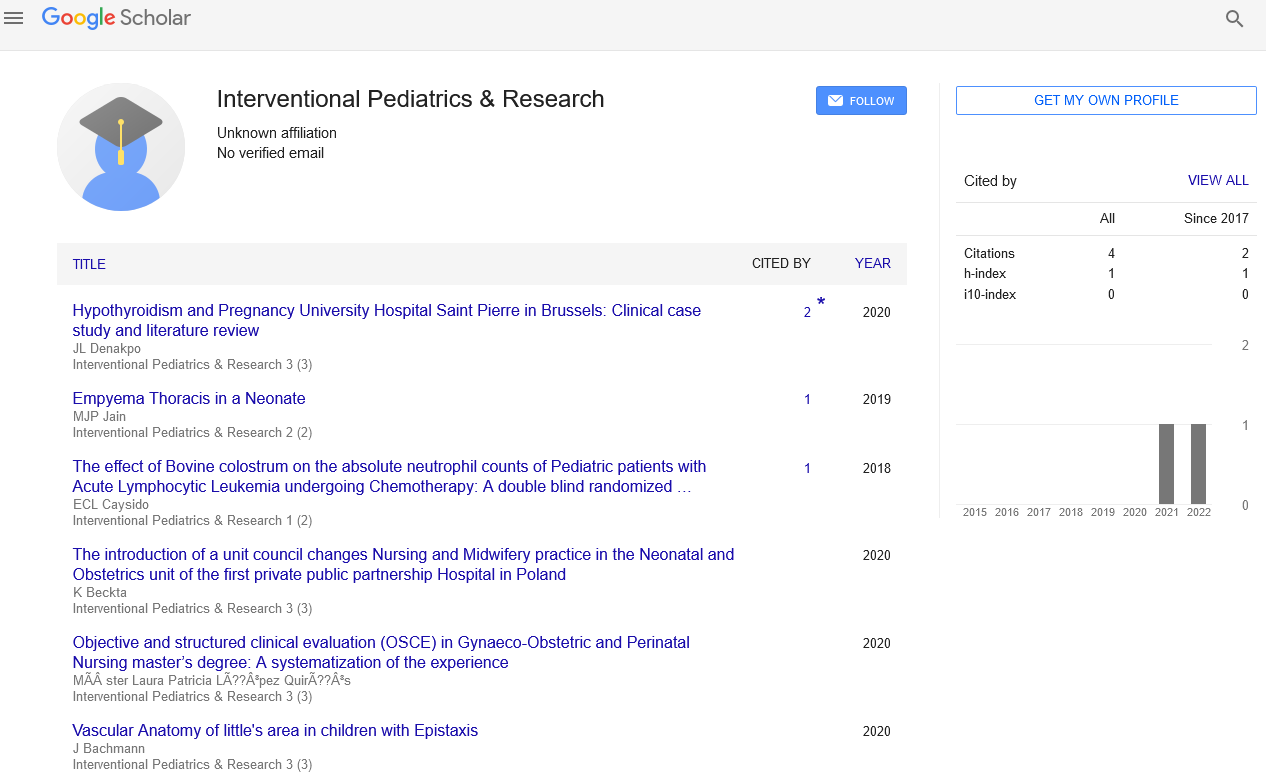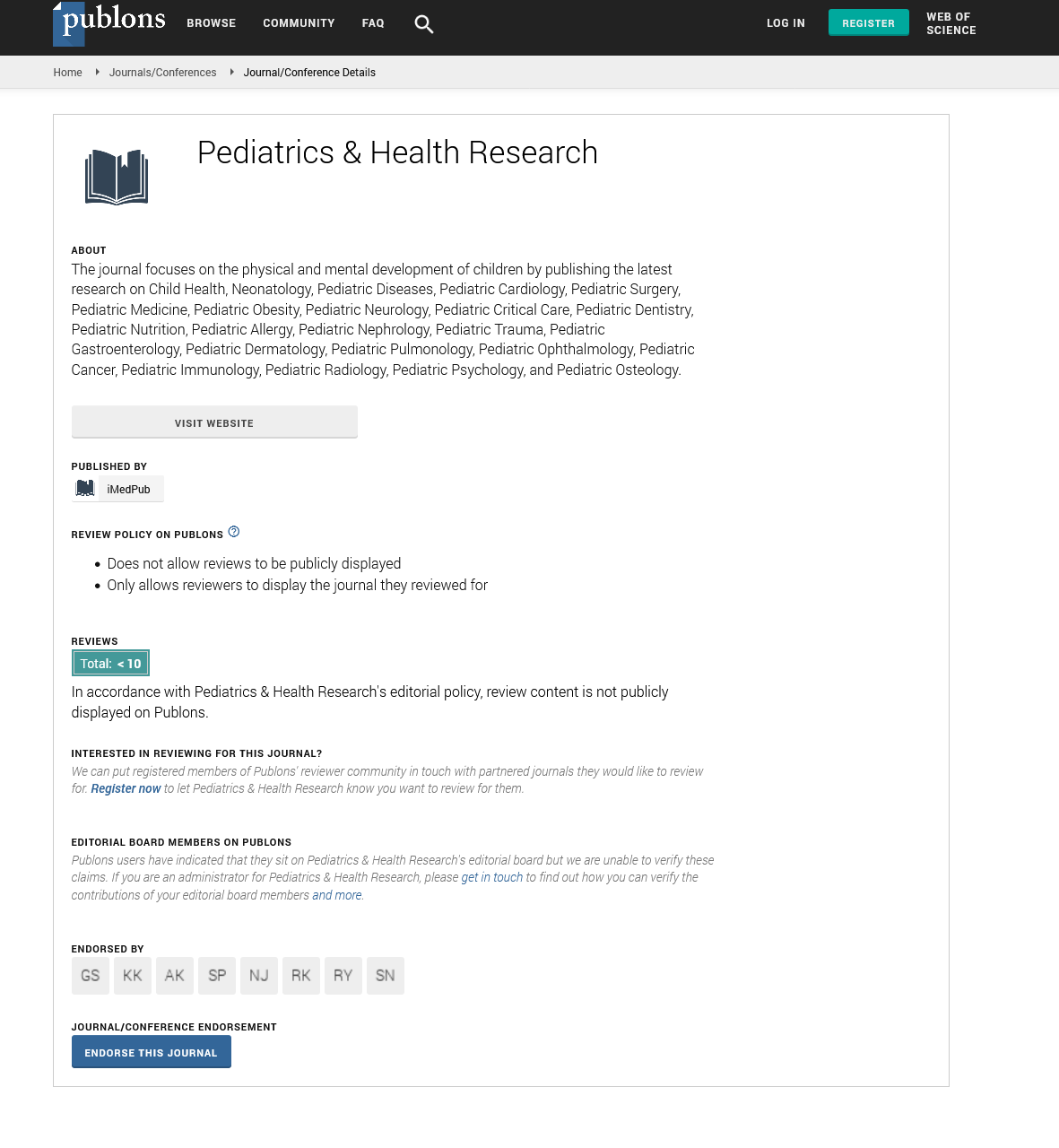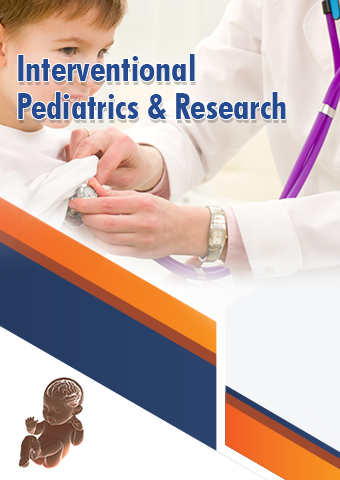Mini Review - Interventional Pediatrics & Research (2023) Volume 6, Issue 3
Fetal Volvulus Without Malrotation Due to a Congenital Mesenteric Defect Presenting As Fetus Arrythmia: One Case Report
Rajendra Fathi*
Department of Medicine, Johns Hopkins University, USA
- *Corresponding Author:
- Rajendra Fathi
Department of Medicine, Johns Hopkins University, USA
E-mail: Rajendraf13@gmail.com
Abstract
What is Congenital Volvulus without a Prenatal Diagnosis of Malrotation? Our goal in this report is to provide a gold standard treatment approach for new-borns affected by congenital volvulus based on our experience and literature review. In this case, we describe a 715g Preterm Boy born at 29 weeks’ gestation and diagnosed with Congenital Valgus without Malrotation at 28 weeks’ gestation by Prenatal Ultrasound with Enlarged Hyper echogenic Loop without Peristalsis. The small intestine was herniated, volvulised and dilatated, resulting in necrosis and dilatation of the bowel. The nephropathies were resected and both ileostomies and jejunostomas were created within 30 hours of birth. Severe post-operative complications resulted in the death of the new born.
Keywords
Prenatal Diagnosis • Fetal and neonatal period • Necrosis • Nephropathies
Introduction
What is Congenital Volvulus? Congenital volvulus’s is a surgical emergency that requires early and accurate diagnosis to determine the best course of treatment and minimize the risk of neonatal death . Most cases of midgut volvulus occur within the 1st year of life, and 60% of cases occur within the first month of life [3].When it is suspected at the time of birth, volvulus’s is mostly caused by fetal intestinal Malrotation or congenital intestinal anomalies such as intestinal atresia of life . There is not a large amount of available data concerning the risk factors and the prenatal alarm signs, nor are there guidelines for the pre- and post-natal diagnostic and therapeutic approaches in cases of congenital volvuli [1, 2].
Description
There is a lot of literature on fetal volvulus, but the pathogenesis and prenatal ultrasound findings, as well as the clinical presentation, are not fully understood. There are also no guidelines for standardised prenatal / postnatal management, which may explain why the results for midgut are still unsatisfactory. Drawing on our experience of a case of fetal volvulus caused by a premature birth with a delayed diagnosis that resulted in the death of the baby, we conducted a literature review on the pathogenesis and clinical presentation, as well as prognosis, to identify a gold standard management approach for this fragile group of babies and to reduce the mortality rate associated with fetal volvulus. This manuscript was prepared according to the CARE guidelines
Discussion
Prenatal vs. Postnatal Volvulus: What is the difference between the two? The clinical and radiologic presentation of prenatal volvulus caused by Malrotation has been extensively discussed in the literature. The management approach for prenatals is well established. The differential between prenatals and postnatals is complicated due to several etiological factors [3]. The presentation of prenatals is poorly characterized or poorly understood. This can lead to a potentially fatal diagnosis and treatment delay for the newborn.The most common cause of prenatals volvulus are intestinal malrotations.The incidence of prenatals Malrotation in live births is 1:2500 .When Malrotation or non-rotations occur, the mesenteric or intestinal development is impaired. The small intestine and mesentery are usually placed in the central position. The right colon and mesocolon are usually attached to the posterior abdominal wall [4].
The aetiology of congenital mesenteric defects
Sectoral mesenteric defects are not fully understood. However, it appears that each of these defects is caused by either excessive growth in a small segment of the small intestine, or uncontrolled growth in an isolated segment of a mesentery. Various hypotheses have been proposed for the pathogenesis of these defects [5].
These include, Mesenteric attachment anomalies Peritoneal reflection development impairment Hypo-vascular enlargement of the mesenteric tissue area Regression of the Dorsal Mesentery Compression of the Mesentery by the Colon during Foetal Mid- Gut Herniation into the Yolk Satchel primary In most cases, it occurs at ileo-ceecal level, where the mesenteric conduction between ilea and ecal is not connected, and at sigmoid level, where the mobile lateral area of the mesosigmoid rotates around the fixed medial area [6] . Ladd’s bands may also be involved in peritoneal reflection development. Ladd’s bands are regions of peritoneal reflection that can be disrupted, allowing the connective tissue in the sub mesothelioma to expand beyond this region, leading to fusion and intestinal obstruction. Gastrointestinal anomalies such as Cystic fibrosis, Small Bowel Atresia or Hirschsprung’s disease [7].
Clinical presentation at birth
Neonatal volvulus presentation is very different between preterm and term newborns. Most term new-borns with congenital volvuli show abdominal distension and bilious vomiting. On the other hand, preterm new-borns are usually asymptomatic, or they show nonspecific symptoms like gastric retention, sleepiness, abdominal distension and shock. In the case of the preterm baby we describe, there was minimal painless adninal distension and there was no collateral circulation [8, 9]. There was no bilious gastric vomit. Although bilious vomiting is rare in this group of neonates, bile-stained nasogastric aspirates are commonly performed. The use of CPAP is common in the management of preterm babies and may also improve abdominal distension [10].
Conclusion
Foetal Volvulus Congenital Volvulus is a very rare condition that has a very high mortality and morbidity rate. Prenatal diagnosis is still very challenging due to the non-specific ultrasound features. If bowel dilatation is suspected, intestinal duplications or Malrotation should be suspected. If prenatally suspected, strictly follow up with serial ultrasound assessments and arrange for a scheduled caesarean without waiting for classic clinical and ultrasound features. Maternal foetal medicine specialist, paediatric surgeon and neonatologist should provide multidisciplinary care. Surgical intervention including stoma creation after birth is required for this newborns.Standardised timing of delivery and surgery should be proposed to minimize foetal mortality.
References
- Mark S. Gene-Environment Interactions During the First Thousand Days Influence Childhood Neurological Diagnosis. Semin Pediatr Neurol. 42, (2022).
- Rikke S. From next-generation sequencing to targeted treatment of non-acquired epilepsies. Expert Rev Mol Diagn. 19,217-228(2019).
- Pedro M. Advantages of current fetal neuroimaging and genomic technologies in prenatal diagnosis: A clinical case. Eur J Med Genet. 104-652(2022).
- Nolan J, Danielle M, Fink J. Genetics of epilepsy. Handb Clin Neurol. 148,467-491(2018).
- Barkovich A. A developmental and genetic classification for malformations of cortical development: update 2012. Brain 135, 1348-1369(2012).
- Guerrini R. Genetic malformations of cortical development. Exp Brain Res. 173, 322-333(2006).
- Ludvigsson, Jonas F, Ludvigsson J. Coeliac disease in the father affects the newborn. Gut. 49,169-175 (2001).
- Ratnam S, Michele M P, Robert M et al. MicroRNAs as biomarkers for birth defects. MicroRNA. 11, 2-11(2022).
- Renske O. International consensus recommendations on the diagnostic work-up for malformations of cortical development. Nat Rev Neurol. 16,618-635 (2020).
- Benjamin H, Lianne G. Congenital Malformations and Genetic Disorders of the Respiratory Tract: (Larynx, Trachea, Bronchi, and Lungs). Am Rev Respir Dis. 120, 151-185(1979).
Indexed at, Google Scholar, Crossref
Indexed at, Google Scholar, Crossref
Indexed at, Google Scholar, Crossref
Indexed at, Google Scholar, Crossref
Indexed at, Google ScholarCrossref
Indexed at, Google Scholar, Crossref
Indexed at, Google Scholar, Crossref
Indexed at, Google Scholar, Crossref
Indexed at, Google Scholar, Crossref


